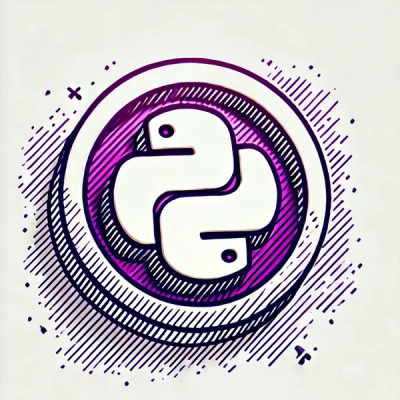
Research
PyPI Package Disguised as Instagram Growth Tool Harvests User Credentials
A deceptive PyPI package posing as an Instagram growth tool collects user credentials and sends them to third-party bot services.
This package allows you to easily set text with colors, background colors, and effects in your terminal. With this package, you can customize your messages and make your terminal more visually appealing and easy to read.
exColor is a package that allows you to easily apply text colors, background colors, and effects in your terminal. With this package, you can customize your messages to make your terminal output more visually appealing and readable.
| Technology | Version |
|---|---|
| Node | 16.7.0 or higher |
| NPM | 10.8.2 |
Open a terminal at the root of your project
Execute
npm i excolor
To use exColor with ES6 syntax, you can do so as follows:
import logs from "excolor";
logs("%[yellow] Hello world of color ");
You can combine different color and effect operators in a single exColor string by separating them with the | character. This feature allows you to apply multiple styles simultaneously, creating custom text combinations.
In the example:
import logs from "excolor";
logs("%[yellowBright|bgRed|blink] Hello world of color ");
The following operators are combined:
yellowBright: Applies a bright yellow text color.bgRed: Sets a red background.blink: Makes the text blink.This combination creates text with bright yellow color on a red background that blinks. You can mix any number of color operators (foreground and background) and effects (like bold, italic, underline, etc.) to achieve the desired style.
This flexibility allows you to create complex and styled text outputs in the terminal.
You can apply basic colors and their bright variants. Examples:
Basic Colors: black, red, green, yellow, blue, magenta, cyan, white.
Bright Colors: blackBright, redBright, greenBright, yellowBright, blueBright, magentaBright, cyanBright, whiteBright.
import logs from "excolor";
logs("%[red]This text is red");
logs("%[greenBright]This text is bright green");
Set background colors for your text:
Basic Backgrounds: bgBlack, bgRed, bgGreen, bgYellow, bgBlue, bgMagenta, bgCyan, bgWhite.
Bright Backgrounds: bgBlackBright, bgRedBright, bgGreenBright, bgYellowBright, bgBlueBright, bgMagentaBright, bgCyanBright, bgWhiteBright.
import logs from "excolor";
logs("%[bgBlue]This text has a blue background");
logs("%[bgRedBright]This text has a bright red background");
exColor allows you to add effects like:
bolddimitalicunderlineblinkinverthidestrikeimport logs from "excolor";
logs("%[bold]This text is bold");
logs("%[underline|red]This text is underlined and red");
logs("%[blink]This text will blink");
In 256-color mode, you can use ANSI's 256-color palette, which provides a wide range of color options for both text and background. This palette includes:
You can set the text color using fg256(number) and the background color using bg256(number).
import logs from "excolor";
logs("%[fg256(82)]This is a custom 256 color text");
logs("%[bg256(124)]This text has a custom 256 color background");
exColor provides specific operators to reset text color, background color, and effects to the terminal’s default settings. These operators allow you to clear any styling and return to the terminal’s original look.
!bg or !background:
%[!bg] or %[!background]!fg or !color:
%[!fg] or %[!color]normal, reset, or "" (empty string):
%[normal], %[reset], or simply %[]// Text with a red background and white text, then reset to the default background
logs("%[white|bgRed]Important Message%[!bg] now with default background");
// Text with bold effect and green color, then reset text color
logs("%[green|bold]Green Bold Text%[!fg] default text color");
// Text with underline and blue color, then reset all styles
logs("%[blue|underline]Underlined Text%[reset] default text and style");
These reset operators allow for fine control over styling, making it easy to return to default colors or clear specific effects without affecting the rest of the terminal's styling.
For more customization, you can specify colors in RGB and Hexadecimal formats.
RGB: rgb(r,g,b) for text and bgRgb(r,g,b) for background.
The RGB format allows you to specify colors by setting values for Red (R), Green (G), and Blue (B). Each of these components can take an integer value between 0 and 255, where:
r (Red) represents the intensity of the red component.g (Green) represents the intensity of the green component.b (Blue) represents the intensity of the blue component.For example, rgb(255,0,0) produces a bright red color (maximum intensity of red and no green or blue), while rgb(0,255,0) produces a bright green.
import logs from "excolor";
logs("%[rgb(255,151,0)]This text is colored rgb(255,151,0)");
logs("%[bgRgb(69,42,4)|white]This text has a background color in RGB");
Hexadecimal: hex(#RRGGBB) for text and bgHex(#RRGGBB) for background.
The Hexadecimal format represents colors using a six-digit hexadecimal code, where each pair of digits corresponds to one of the RGB components:
RR is the hexadecimal value for the red component.GG is the hexadecimal value for the green component.BB is the hexadecimal value for the blue component.Each pair can range from 00 (0 in decimal) to FF (255 in decimal), allowing for 256 possible values per color channel. For example, #FF5733 represents a reddish-orange color, where FF is the maximum red, 57 is a moderate amount of green, and 33 is a small amount of blue.
import logs from "excolor";
logs("%[hex(#1F44A7)]This text is colored hex(#1F44A7)");
logs("%[bgHex(#7A0000)|hex(#ee3)]background color with text color in hex");
example.jsThe example.js file included in the project provides detailed examples of all these features. Run this file to see the colors and effects in action and verify the functionality of the package.
If you want to run the excolor example script, use the following command:
npm explore excolor -- npm run example
FAQs
This package allows you to easily set text with colors, background colors, and effects in your terminal. With this package, you can customize your messages and make your terminal more visually appealing and easy to read.
We found that excolor demonstrated a healthy version release cadence and project activity because the last version was released less than a year ago. It has 0 open source maintainers collaborating on the project.
Did you know?

Socket for GitHub automatically highlights issues in each pull request and monitors the health of all your open source dependencies. Discover the contents of your packages and block harmful activity before you install or update your dependencies.

Research
A deceptive PyPI package posing as an Instagram growth tool collects user credentials and sends them to third-party bot services.

Product
Socket now supports pylock.toml, enabling secure, reproducible Python builds with advanced scanning and full alignment with PEP 751's new standard.

Security News
Research
Socket uncovered two npm packages that register hidden HTTP endpoints to delete all files on command.